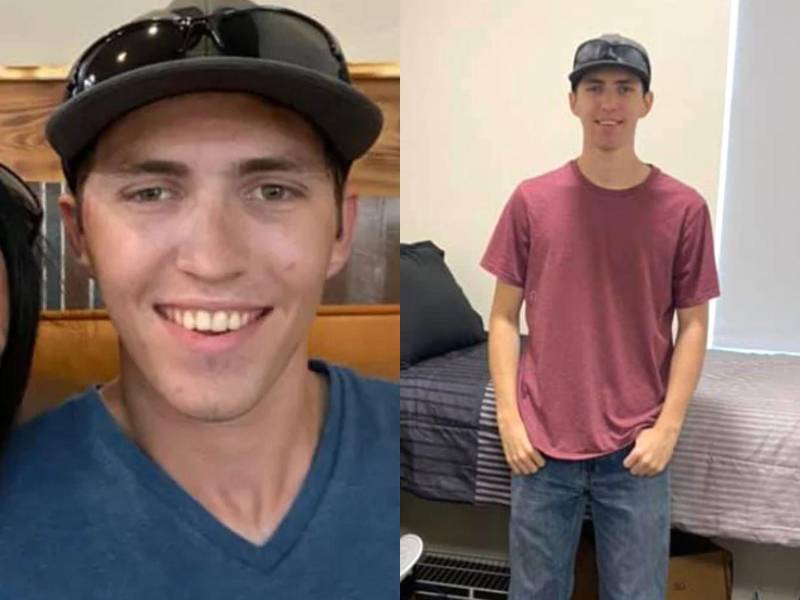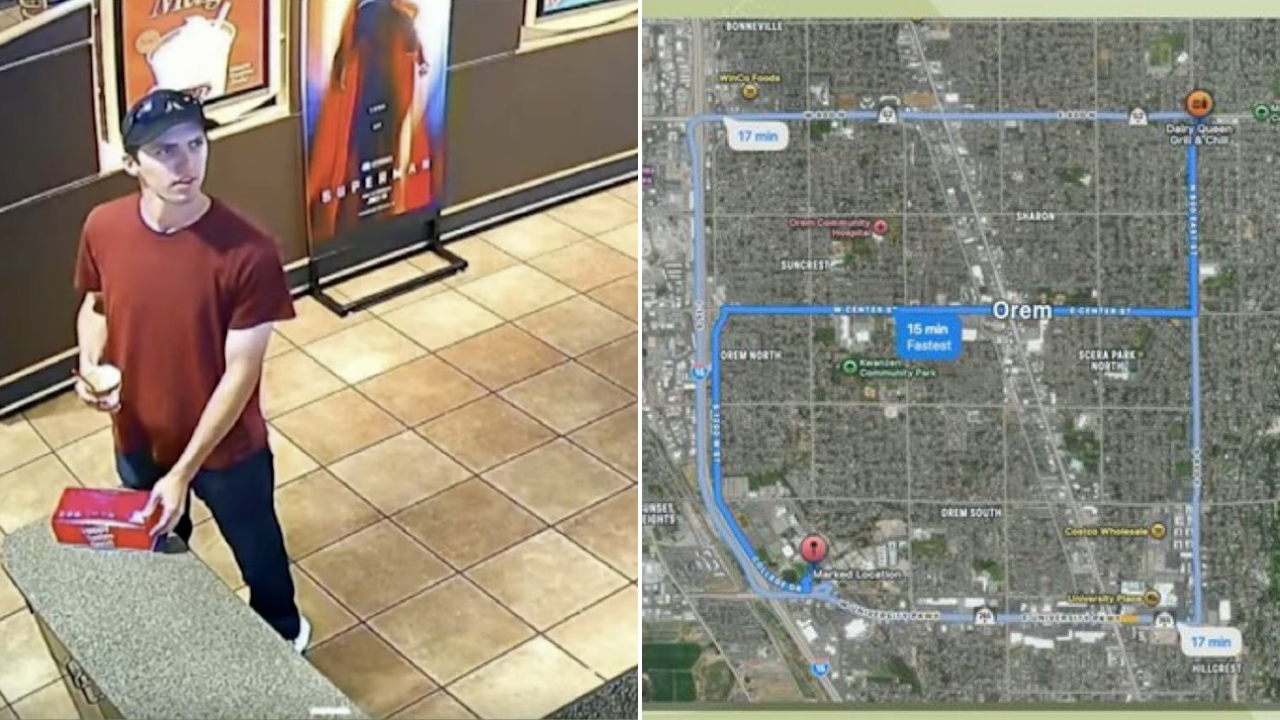Charlie Kirk’s surgeon breaks his silence: “I’ve never seen anything like this in my life” — and that bullet was never supposed to stop there.
Charlie Kirk’s surgeon breaks his silence: “I’ve never seen anything like this in my life” — and that bullet was never supposed to stop there.
The Night That Stopped the Nation
It was supposed to be an ordinary evening — a quiet night inside a high-security medical wing in Phoenix. But when the emergency call came through, the tone of the operator’s voice told everyone in the hospital that this was
not routine.
Minutes later, a team of top surgeons and trauma specialists stood waiting under the sterile glare of the operating lights. No one knew exactly what had happened to the high-profile patient being rushed in under an anonymous code name, but everyone felt the weight of it.
As the automatic doors burst open and the gurney rolled in, the lead surgeon, Dr. Alan Mercer, would later recall that moment as “the instant time stopped.”

Silence, Then Breathing
There were no reporters outside. No cameras. Only the muffled sound of boots moving quickly down linoleum hallways.
The patient had been brought in under strict confidentiality. The file carried only a symbol — no name. Yet for those in the know, it was unmistakable: the man on the table was
Charlie Kirk, one of the most widely recognized political figures in the country.
Dr. Mercer, who had spent decades in trauma care, later said in an off-the-record conversation, “We’ve operated on soldiers, athletes, CEOs — people who’ve been through every kind of emergency. But this was different. The body responded in a way none of us had seen before.”
He paused, almost haunted, before adding:
“It fought as if it knew who it had to protect.”
A Team in Shock
Inside the operating theater, six specialists worked in silence. The steady rhythm of the ventilator filled the room as monitors blinked and surgical tools gleamed under white light.
Every detail was clinical — every motion precise. And yet, there was an undercurrent none of them could explain.
“The readings didn’t make sense,” said one nurse, who later spoke under condition of anonymity. “It was like the body was predicting what we were about to do. His vitals would stabilize right before every major step.”
Such synchronization is unheard of in emergency operations. But the entire team saw it happen.
By dawn, the procedure was complete. Charlie Kirk was stable — barely — but alive.
Dr. Mercer stepped out of the operating room, his scrubs soaked, his expression unreadable.
He said only one thing before leaving for the consultation room:
“That shouldn’t have been possible.”

The Six Days of Silence
For nearly six days, Dr. Mercer avoided all interviews, declined every media inquiry, and refused even internal review meetings. Colleagues described him as “distant, almost haunted.”
The man who had always been methodical and confident was now quiet, reflective, and visibly shaken.
When he finally spoke — during a closed medical debrief — those in attendance said his hands trembled as he recalled the night.
“That bullet,” he said softly, “it wasn’t supposed to stop where it did.”
Confusion filled the room. He clarified — it wasn’t that the injury itself was unusual. It was
how the body reacted.
“There was no medical explanation for it,” Mercer continued. “Every textbook says it shouldn’t have been survivable. But somehow, every critical structure shifted — almost deliberately — just enough.”
A Medical Mystery
Doctors across the country have debated the case privately. Some call it divine intervention. Others point to rare genetic resilience or instinctive physiological responses. But none can fully explain the sequence of survival.
“Medically, we can model probabilities,” said Dr. Anna Velez, a biomedical researcher familiar with the case. “But this defied probability. There are recorded anomalies in medicine, but not like this. The body almost anticipated what was coming.”
Somewhere between science and something larger, the mystery deepened.

The Moment the Monitors Spiked
On the third night post-operation, when the medical team had begun to relax, the monitors suddenly spiked. The alarms wailed — a sign of either distress or awakening.
Nurses rushed in. But instead of a crisis, they found the patient breathing steadily on his own, eyes fluttering open.
Dr. Mercer was called immediately.
“He looked around the room, calm,” Mercer recounted. “Then he whispered something. I couldn’t catch all of it, but it sounded like he said, ‘I’m not done yet.’”
Those four words sent chills through the staff. Because the recovery that followed was as impossible as the survival itself.

The Return to Strength
By the end of the second week, Charlie Kirk’s vitals were normal. By the third, he was walking — carefully, slowly, but walking nonetheless.
Physical therapists described his determination as “unreal.” One recalled, “It was as if his body had a mission. Every day he’d push harder than his limits allowed.”
Dr. Mercer, still shaken but deeply respectful, visited daily, taking notes, trying to understand the phenomenon.
“It wasn’t just recovery,” he said. “It was renewal.”
Behind Closed Doors
Meanwhile, the hospital administration faced a storm of inquiries from journalists and officials. But strict non-disclosure orders were in place. The file remained sealed under a classification reserved for “private national interest” cases — a category rarely invoked.
The speculation outside grew intense.
Online forums buzzed with theories ranging from advanced medical technology to divine miracle stories.
But inside those walls, only one fact mattered: Charlie Kirk was alive — and the doctors didn’t know how.

When the Surgeon Finally Spoke
It took nearly three weeks for Dr. Mercer to speak publicly. And when he did, his voice carried both scientific precision and spiritual awe.
In a televised interview, he was asked point-blank if he believed something supernatural had taken place.
He hesitated, then said:
“I believe in biology, but I also believe that the human will can reach beyond what we define as medicine. What I saw wasn’t supernatural — it was deeply human. It was something we can’t quantify yet.”
He leaned forward, eyes steady:
“I’ve never seen anything like this in my life.”
The host fell silent. The camera lingered on Mercer’s face — lined with exhaustion, but filled with conviction.
What the Records Show
Later, portions of the official report — heavily redacted — surfaced online. They confirmed that the surgical findings matched Mercer’s statements:
No major organs were directly compromised.
Internal movements of tissue and muscle were described as “anomalous.”
Recovery metrics were “inconsistent with projected outcomes.”
To the untrained eye, it might seem ordinary. But to medical professionals, those notes told a story that science couldn’t fully hold.
The Nightmares and the Light
Close colleagues revealed that Mercer still dreams of that night. Sometimes he wakes drenched in sweat, the sound of the ventilator echoing in his mind.
“It’s not fear,” he told a friend. “It’s awe. You spend your life studying anatomy, control, precision — and then you meet something you can’t control at all.”
He often describes the moment as a lesson — that the line between science and faith, logic and miracle, is thinner than we imagine.
Kirk’s Own Words
Weeks later, during a private gathering, Kirk reportedly reflected on his recovery. A staffer who was present shared that he said:
“I shouldn’t be here. But maybe that means there’s still something left to say.”
Those who know him closely say that moment marked a turning point — a quieter, more introspective version of the man emerged.
He began writing privately, meeting with small groups, and speaking less publicly. The near-death experience had transformed not just his health, but his worldview.
The Files That No One Expected
In mid-October, a new element entered the picture. Federal investigators, while conducting a standard review of the incident, reportedly uncovered inconsistencies in the chain of medical custody.
Nothing illegal was suggested, but the details were puzzling: certain documents were timestamped before the event occurred.
The finding reignited public interest and sparked yet another wave of speculation.
But Dr. Mercer stayed quiet. When asked about the discrepancy, he smiled faintly and said,
“Some things happen faster than paperwork.”
A Story That Became Larger Than One Man
As the weeks passed, what began as a medical case grew into a national reflection on endurance, human limits, and the mysteries of the body.
Clergy called it divine. Scientists called it an anomaly. Commentators called it resilience.
But the truth may live somewhere in between.
Mercer himself summarized it best in a later lecture to young doctors:
“There will come a day when you’ll see something that defies every page of your training. When that day comes, don’t fear it. Study it. Respect it. Because in that mystery, medicine evolves.”
The Legacy of That Night
Today, months later, the story of that surgery continues to ripple through the medical world. Case studies have been written. Panels have debated the phenomenon of spontaneous physiological adaptation.
But for those who were there — in that cold, bright operating room — the memory remains something beyond science.
One nurse described it simply:
“It felt like the body was fighting for something bigger than itself.”
Reflection: The Surgeon’s Final Words
In his most recent interview, Dr. Mercer sat by his office window, staring out at the Arizona desert. When asked if he would ever forget that night, he shook his head.
“No. Not because it was dramatic, but because it reminded me what medicine truly is — a conversation between life and everything that tries to stop it.”
He paused, and the reporter noticed his hands — still steady, still practiced.
“That bullet wasn’t supposed to stop there,” he said again, softly. “But maybe it stopped exactly where it needed to.”
What We’re Left With
No matter how one interprets the night — as a miracle, anomaly, or simply extraordinary luck — it left a mark on everyone involved.
It reminded the public that beneath politics and headlines, there is still something profoundly human in survival.
In the sterile, humming quiet of an operating room, a surgeon witnessed not just biology — but willpower, mystery, and the impossible refusing to stay impossible.
And that, perhaps, is what keeps him awake even now:
the realization that some battles are fought not with medicine, but with meaning.






Leave a Reply